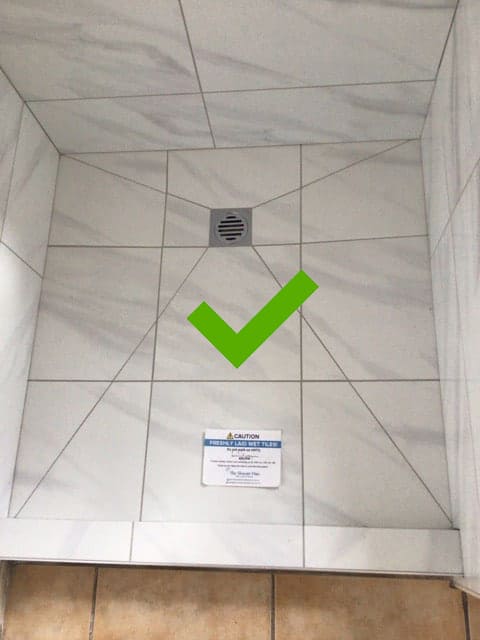Exactly How to Prevent Bathroom Water Damage
Exactly How to Prevent Bathroom Water Damage
Blog Article
What are your beliefs on Preventing Water Damage in the Bathroom?

The bathroom is incredibly at risk for moist build-up and also potential water damage because of the constant use of water in it. This short article uses simple evaluation methods to aid finding water damages hazards.
The regular use water in the washroom makes it extremely susceptible for damp buildup and also potential water damage. By checking it consistently, you can reduce water related damages.
The complying with collection of examinations is very easy to execute and should be done once in every three months in order to keep your shower room healthy and also to stop possible water damages caused by the bathtub, the shower, pipe joints and plumbing, sinks, cupboards, as well as the bathroom
Do not disregard doing these assessments as well as be complete while executing them. Remember that these straightforward examinations can conserve you a great deal of cash by giving very early signs for water damage
Sinks and also Cabinets
Sinks and closets are subjected to wetness as well as moisture everyday as well as are often forgotten. Evaluate consistently under the sink and also on the kitchen counter over it. Fix any kind of drip in the catch as it may recommend drainpipe troubles. Check out the sink, slow-moving draining pipelines might show an obstructed drainpipe. Change sink seals if they are split or loose.
Bathtub and Shower
The shower and bathtub require special focus and also upkeep. Examine the floor tiles as well as replace if broken. Ensure that there is no missing grout between the tiles. Examine and change split caulking at joints where the walls meet the flooring or the tub. Clogged drains and also pipes problems will certainly stop the bathtub from drying out and also may indicate significant issues beneath the bath tub. Talk to a professional promptly to avoid structural damages. Take note of stainings or soft locations around the bathtub wall surfaces as they may show an interior leak.
Plumbing
Signs for water damages are hard to identify considering that many pipelines are set up inside the wall surfaces.
Pay special attention to floor covering and wall surfaces moisture and also stains as they might indicate an unseen plumbing issue. Examine wetness degrees in adjacent areas also.
The Toilet
The bathroom is a vulnerable water junction. Examine the water lines as well as look for leaks around the commode seat, in the hose pipe, and also under the water tank. If you find any indicators of moisture on the flooring around the commode, check for leakages in the toilet rim as well as container seals.
Understand that hanging commode bowl antiperspirants increases the possibilities for obstructions.
Water Damage Signs In The Bathroom To Avoid Cleanup
Musty smell
This is one of the easiest signs to catch because musty smells are so odorous. The damp, earthy, moldy smell should be a big red flag. The smell will develop when moisture gets trapped in surfaces, and begins to facilitate mold growth. Leaking pipes under cabinets, inside walls, and behind shower fixtures will cause moisture to stay trapped and not dry, which will lead to mold growth and spread. As soon as you notice any musty smells in your bathroom, have it checked for hidden water damage and cleanup signs.
Visible mold
If the smell isn’t there to give it away, sometimes you will actually see mold growth. Finding mold in your bathroom is a serious problem, because mold is very harmful to your health. By the time mold growth is visible, it also means that water damage has already occurred and been present for some time. The only way the mold problem can be resolved is to find the source of the moisture and get it stopped. To safely and adequately remove mold, you need to have professionals handle the remediation. Do not waste any time in getting mold problems addressed, fixed, and sanitized so that you can protect you and your family from the many respiratory symptoms caused by mold exposure.
Damaged floors
Bathroom floors should be able to withstand some exposure to water while still remaining in good condition. However, when excess exposure or water leaks occur, they will begin to damage even the most water-resistant flooring. If you notice any cracking, bubbling, staining, or warping on your bathroom floors, there is probably a water leak somewhere causing the distortion. If you notice areas of the floor have become softer, or even have a spongy feeling, there is probably damage to the subfloor. Subflooring is typically made up of plywood. When plywood is exposed to water or moisture, it will absorb it. Once it has become saturated, the weight of the excess water will cause the wood to swell and soften. Check the floors in your bathroom frequently to catch any of these sings before they lead to damaged subflooring.
Changes on walls
When water leaks behind walls, it will cause changes in the drywall. Peeling plaster, blistering paint, and soggy wallpaper are all good indicators that excess water is building up behind the wall. Water leaking behind drywall will cause it to swell and be soft to the tough. If you start to notice gaps along the trim of your walls, or where tile meets the wall, it could also be a strong indicator that there is a leak behind the wall. Any changes, distortion, or damage on the walls should be evaluated as soon as you notice it to prevent further water damage and cleanup.

We are very intrigued by How to Fix a Water Damage Bathroom and I'm hoping you enjoyed reading the new post. In case you liked our blog posting if you please do not forget to pass it around. Thank-you for your time spent reading it.
Schedule Service Now Report this page